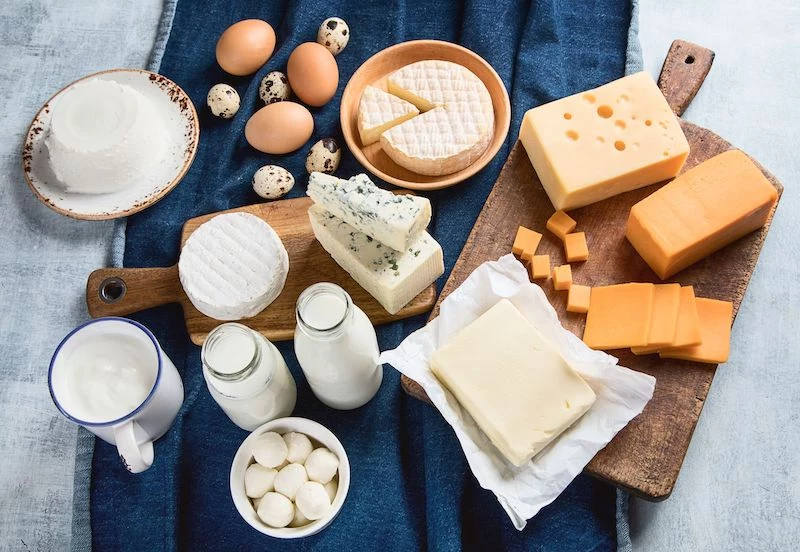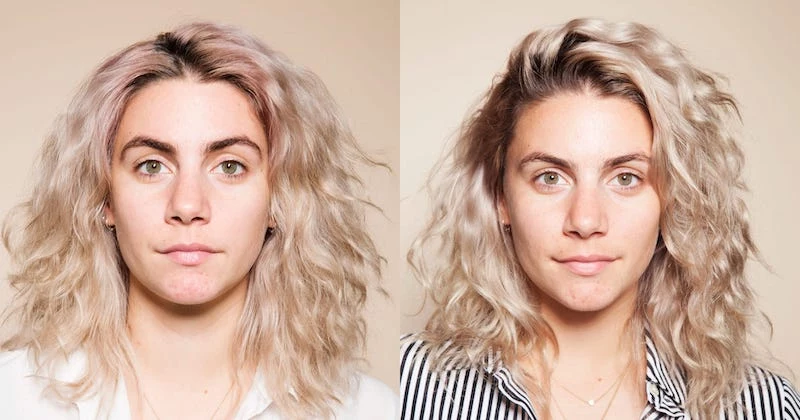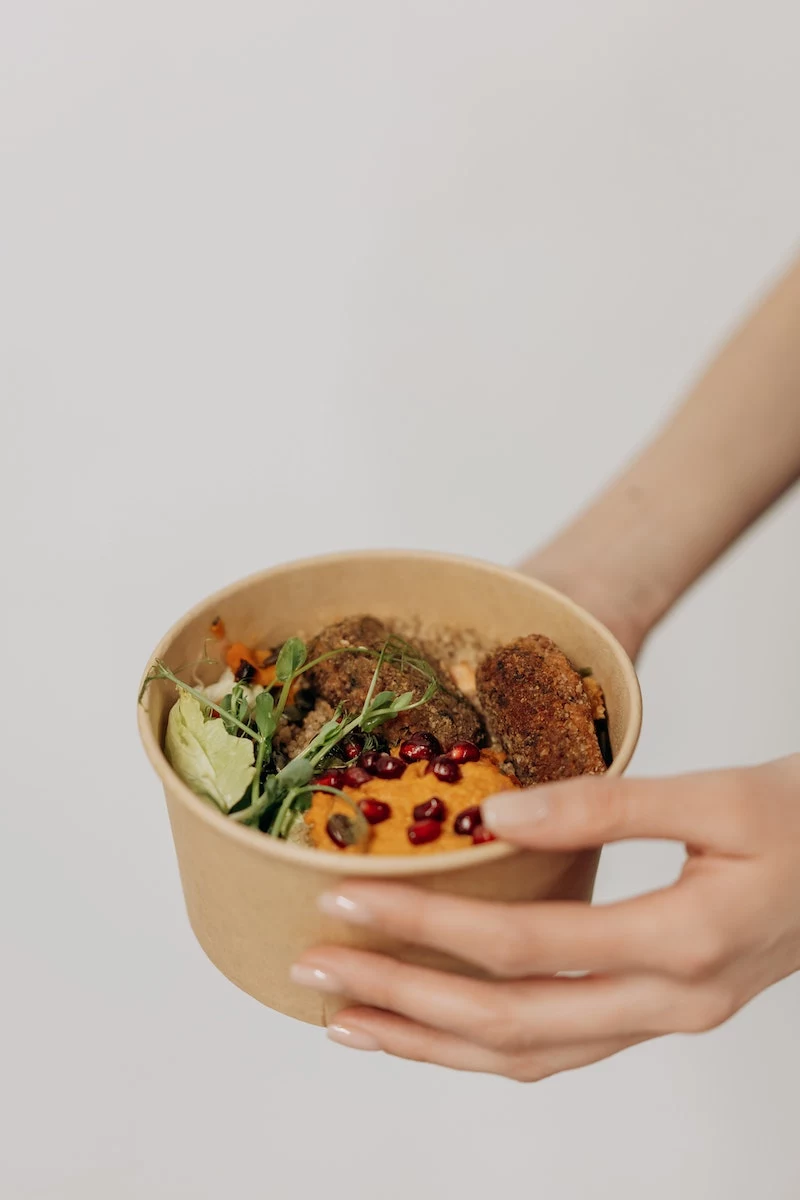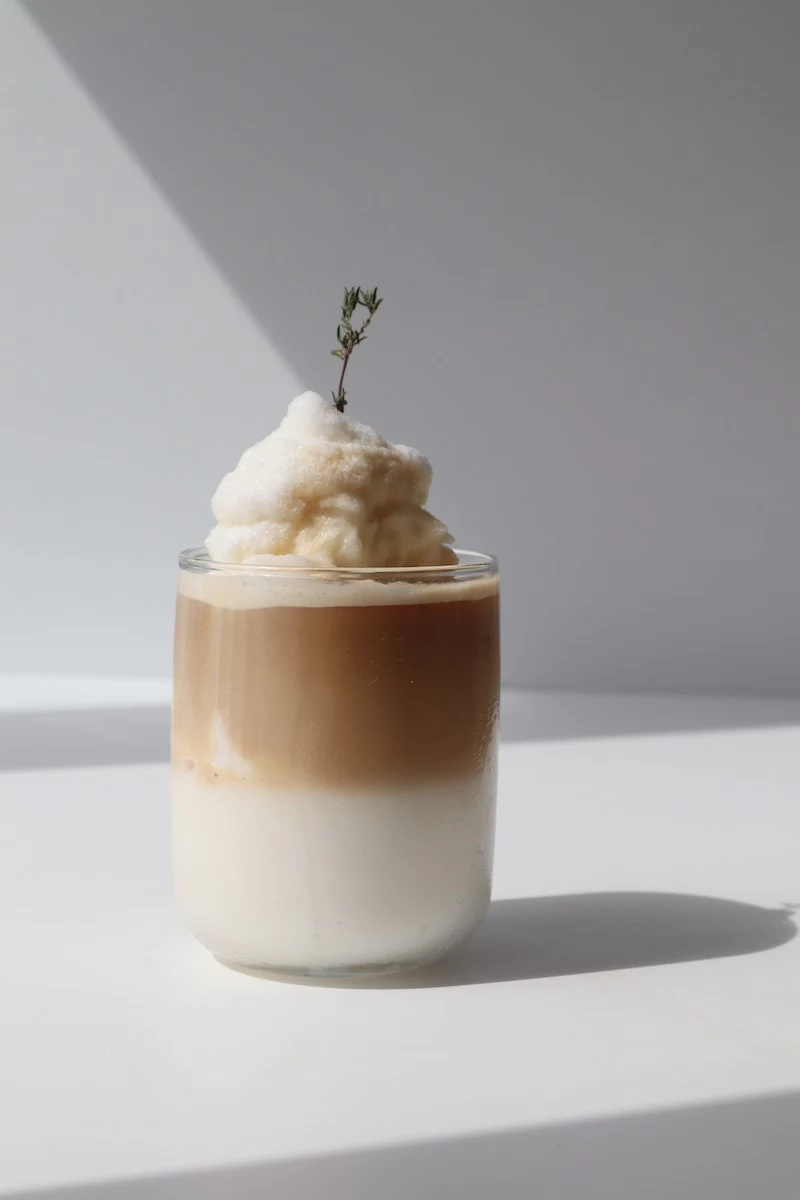Feeling Off? Dairy Might Be the Sneaky Culprit. Here’s How to Know for Sure.
Ever have those days, or maybe even years, where you just feel… off? You’re dealing with bloating you can’t pin down, stubborn acne that won’t quit, a foggy head, or nagging headaches. You’re trying to do everything right—getting enough sleep, trying to manage stress—but something’s still not clicking. It’s frustrating, and honestly, it’s a story I hear all the time.
In this article
So, where do we start looking? Often, the answer is hiding in plain sight: the dairy in our diet. For many of us, milk, cheese, and yogurt are staples we grew up on. But for a huge number of adults, they can be the hidden source of chronic, low-grade issues. This isn’t about labeling dairy as ‘bad.’ Food is way more nuanced than that. This is about becoming a detective for your own body.
The goal is simple: to figure out what your body is actually telling you. We’re going to walk through a safe, structured way to test your own tolerance. We’ll cover the science without getting too stuffy, and most importantly, we’ll talk about how to do this without feeling deprived. Think of it as a personal experiment to finally get some answers.

Why Dairy Can Be a Problem: It’s More Than Just Lactose
To figure out if dairy is a problem, you first have to know what’s in it. Milk is a surprisingly complex food with sugars, proteins, and fats, and any of them can cause trouble. Most people immediately think of lactose intolerance, but that’s only half the picture. To be frank, the proteins in milk are often the bigger issue.
The Sugar Issue: Lactose
You’ve probably heard of this one. Lactose is the sugar in milk. Our bodies need an enzyme called lactase to break it down. While most of us have plenty of it as babies, a huge portion of the global population stops producing as much lactase as they get older. This is totally normal, a genetic thing, not a disorder.
When you can’t break down lactose, it ends up in your large intestine, where your gut bacteria have a party. They ferment the sugar, and that fermentation creates gas. The result? The classic, not-so-fun symptoms of lactose intolerance: bloating, painful gas, cramps, and sometimes diarrhea. It’s uncomfortable for sure, but it’s a digestive problem, not an immune reaction, and it usually happens pretty fast, within a few hours of eating dairy.

The Protein Issue: Casein
Okay, this is where things get really interesting, and it’s a detail that many people miss. Most of the protein in milk is casein. Here’s the key: there are different types of casein. Most of the milk you grab at a typical grocery store comes from cows that produce what’s called A1 beta-casein.
When your body digests this A1 protein, it creates a tiny fragment called beta-casomorphin-7 (BCM-7). For some people, this little peptide can cause a whole host of problems. It’s been linked to slowing down digestion (hello, constipation!), and more importantly, it can trigger inflammation. That inflammation doesn’t just stay in your gut; it can show up as skin problems like acne and eczema, or even as sinus congestion and that annoying post-nasal drip.
By the way, some specific cow breeds produce what’s called A2 milk, which doesn’t create that BCM-7 fragment. It’s why some people who swear dairy messes them up find they can drink A2 milk with no issues at all. It’s a game-changer for many, showing the problem isn’t always ‘dairy,’ but a specific type of dairy.

Lactose Intolerance vs. Casein Sensitivity: What’s the Difference?
It’s super helpful to understand how these two differ because the symptoms can overlap but often feel quite distinct. Think of it this way:
- Lactose Intolerance is a fast-acting digestive issue. You’ll probably feel it within a few hours. The symptoms are almost always gut-related: bloating, gas, stomach cramps, and diarrhea. It’s uncomfortable, but it’s localized.
- Casein Sensitivity is often a slower, more systemic reaction. Since it can be tied to inflammation, the symptoms might take a day or two to appear and can affect your whole body. Think brain fog, skin breakouts (acne, eczema), sinus problems, joint aches, or constipation.
Recognizing these patterns is the first step in your detective work.
The 4-Week Plan to Get Clear Answers
If you think dairy might be your issue, the gold standard for figuring it out is a temporary elimination diet. It has to be done right to get clear results. It’s a two-part process: a strict elimination phase, followed by a careful reintroduction phase.

Phase 1: The Elimination (Go 100% Dairy-Free for 3-4 Weeks)
First step: completely remove ALL dairy from your diet for at least three weeks, though four is even better. This gives your body enough time to fully clear out the milk proteins and for any inflammation to calm down. Anything less, and you might not get a clean slate, which makes your results murky.
And I mean all dairy. You have to become a label detective. Look for these words on ingredient lists:
- Milk, milk solids, milk powder
- Casein, sodium caseinate
- Whey, whey protein concentrate
- Lactose
- Butter, butterfat, cream
- Cheese, cottage cheese, cream cheese
- Yogurt, kefir, sour cream
Heads up! A common pitfall is hidden dairy. I’ve seen it a thousand times. Someone does great for a week, then gets knocked out by whey in their protein bar or casein in their salad dressing. Check labels on bread, crackers, soups, and even deli meats. When in doubt, stick to whole foods—it’s just easier.

I know what you’re thinking: “What on earth will I eat?!” It’s easier than you think. Here’s what a sample day could look like:
- Breakfast: Oatmeal made with water or almond milk, topped with berries, walnuts, and a sprinkle of cinnamon.
- Lunch: A huge salad with grilled chicken or chickpeas, tons of veggies, avocado, and a simple olive oil and vinegar dressing.
- Snack: An apple with a spoonful of almond butter.
- Dinner: Baked salmon with roasted broccoli and a side of quinoa.
See? Totally doable and delicious.
Phase 2: The Reintroduction (The Most Important Part!)
After your 3-4 weeks are up, it’s time to reintroduce dairy and see what happens. Don’t rush this! You need to be methodical to get clear answers. Introduce only one type of dairy at a time, and give yourself a few days between each test.
Here’s a strategic order to follow, starting with the foods least likely to cause a reaction:

- Test 1: Ghee. Ghee is clarified butter, so nearly all the lactose and casein are removed. On day one, cook your eggs with one teaspoon of ghee in the morning. Then, wait two full days. Don’t have any other dairy. Journal any symptoms—digestive, skin, mood, anything.
- Test 2: Fermented Goat or Sheep Dairy. If ghee went well, try a fermented option next, which is often easier to digest. Have a half-cup of plain goat or sheep milk yogurt. Wait another two to three days, observing and journaling.
- Test 3: Hard, Aged Cheese. Next, try a small, 1-ounce piece of a high-quality, hard-aged cheese like Parmesan or aged cheddar. The aging process breaks down much of the lactose. Wait and see.
- Test 4: A2 Milk. If you’re still feeling good, it’s time to test the proteins more directly. Try a half-cup of A2 milk in the morning. This specifically tests your tolerance to the A2 casein protein and lactose. Wait and observe.
- Test 5: Conventional A1 Milk. This is the final boss. If all else has gone well, try a half-cup of regular A1 milk. For many, this is the one that brings back symptoms. Wait the final two to three days.
If you have a clear negative reaction to any food, stop eating it! Note your symptoms, and wait until they completely disappear before trying the next food on the list. Your journal is your best friend here—don’t skip it!

Living Well Without Dairy (If You Need To)
So, you discovered you feel way better without dairy. Now what? Building a sustainable, nutritious dairy-free life is easier than ever, but it takes a little planning.
Don’t Forget Your Nutrients: Calcium & Vitamin D
“But what about my bones?!” This is always the first question. Dairy is a good source of calcium, but it’s far from the only one. Fortified plant milks (almond, soy, oat) are your new best friend; just check the label to make sure they have added calcium and vitamin D—most have just as much as cow’s milk. Other great sources are leafy greens like kale and collards, tofu made with calcium sulfate, and canned sardines or salmon (if you eat fish).
Your Dairy-Free Starter Kit
The dairy-free aisle can be overwhelming. Here’s a quick shopping list to get you started:
- Plant Milk: Oatly is amazing and creamy for coffee (about $4-$5/carton). Almond milk is a great all-rounder and usually cheaper. Soy milk offers the most protein.
- Yogurt Alternative: Look for coconut, cashew, or almond-based yogurts. Kite Hill and Forager Project are great brands. Go for plain to avoid a ton of added sugar.
- A Good Butter Sub: For spreading, Miyoko’s Kitchen makes a fantastic cultured vegan butter (it’s a splurge, around $6-$7). For cooking, you can’t go wrong with a good olive oil or avocado oil.
- The “Cheesy” Flavor Hack: Nutritional yeast! It’s a flaky, deactivated yeast that has a nutty, cheesy flavor. It’s a game-changer on popcorn, in pasta sauces, or sprinkled over roasted veggies. You can find it at places like Trader Joe’s or Whole Foods for about $5 a bag.
- Cheese Alternatives: Let’s be honest, this is the toughest one. Most don’t melt well. But for spreads or crumbling on a salad, nut-based cheeses from brands like Miyoko’s or Treeline can be delicious. Appreciate them for what they are, not for being a perfect dairy copy.

When to Call in a Professional
Self-experimentation is powerful, but you need to know when to get professional guidance.
This is critical: an intolerance is not an allergy. An intolerance makes you feel bad. A true food allergy can be life-threatening. If you ever experience symptoms like hives, swelling of your lips or tongue, or difficulty breathing after eating dairy, that’s an emergency. You need to see an allergist for proper testing—do not attempt a reintroduction at home.
Not Ready for the Full 4 Weeks? Try This.
Feeling a little intimidated by the full elimination? No problem. Start with a quick win.
Try this 3-Day Challenge: For the next three days, just remove liquid dairy. That means no milk in your coffee, no cream in your soup, and no yogurt for breakfast. That’s it. Pay attention to how you feel. For many, even this small step can lead to a noticeable reduction in bloating and mental fog. It’s a powerful first step to learning how to listen to your body.

Inspirational Gallery
Beyond the obvious culprits like milk and cheese, dairy often hides in unexpected places. When you start your food detective work, keep an eye out for these on ingredient labels:
- Many brands of bread and crackers
- Canned tuna (some brands use casein)
- Salad dressings, especially creamy ones
- Protein powders (whey is a milk derivative)
- Processed meats like sausages and hot dogs
Globally, it’s estimated that around 68% of the world’s population has some degree of lactose malabsorption. It’s not an abnormality; for many ethnicities, it’s the genetic norm.
I’m cutting out dairy… so what do I put in my coffee?
It’s the modern-day dilemma! For a creamy, rich latte that froths beautifully, oat milk is the reigning champion. Brands like Oatly have formulated ‘barista editions’ specifically for this. If you prefer a lighter taste for your cereal or smoothies and want fewer calories, unsweetened almond milk from brands like Califia Farms or Blue Diamond is an excellent choice. The key is to experiment and find what your taste buds love.
The Casein Conundrum: Not all milk protein is created equal. Most cow’s milk in Western countries contains A1 beta-casein, a protein that, for some people, can break down into a peptide called BCM-7, which is linked to inflammation and digestive discomfort. Milk from goats, sheep, and certain heritage cow breeds contains A2 casein, which is structured differently and often better tolerated. This might explain why some people who react to cow’s milk are fine with goat cheese.
- Reduced bloating and a calmer digestive system.
- A noticeable decrease in post-meal fatigue.
- Significant savings on your grocery bill.
The secret? Making your own oat milk. All you need is one part rolled oats to four parts water and a blender. Blend for 30-45 seconds (no more!), strain through a fine mesh or nut milk bag, and you’re done. It’s the simplest, most affordable dairy-free swap.
The journey away from dairy isn’t just about what you eliminate; it’s about what you discover. Many people report surprising ‘non-scale victories’ that go beyond the bathroom scale or even digestion. Think waking up with a clearer head, noticing a persistent skin rash finally fade, or feeling a sustained level of energy throughout the afternoon without the typical slump. These subtle shifts are often the most powerful confirmation that you’re on the right path for your body.
Nutritional Yeast: Your Dairy-Free Best Friend
Craving that savory, cheesy flavor? Meet nutritional yeast. This deactivated yeast, often called ‘nooch,’ is a powerhouse of B vitamins and has a naturally nutty, cheesy taste. A sprinkle elevates popcorn, pasta sauces, or kale chips. For a simple ‘parmesan’ substitute, blend a cup of cashews with four tablespoons of nutritional yeast and a pinch of salt. It’s a game-changer for plant-based eating.
A single serving of firm tofu prepared with calcium sulfate can provide about the same amount of calcium as a glass of milk.
When you ditch dairy, the calcium question looms large. But nature provides. Beyond fortified plant milks and tofu, focus on incorporating dark leafy greens like kale and collard greens, sardines with bones, broccoli, and sesame seeds (tahini is fantastic) into your regular diet to ensure you’re getting plenty of this essential mineral.
Forget the rubbery, bland dairy-free cheeses of the past. The market has exploded with artisanal options that rival their dairy counterparts in complexity and texture. Brands like Miyoko’s Kitchen use traditional cheesemaking techniques with cashews to create everything from tangy, aged farmhouse wheels to soft, spreadable mozzarella. It’s a testament to how delicious and satisfying a dairy-free life can be.
Yogurt Swap: Coconut vs. Soy
Coconut Yogurt: Offers a rich, thick, and creamy texture, making it a luxurious option. Brands like Cocojune are known for their simple ingredients and tangy flavor from fermentation. It is higher in saturated fat.
Soy Yogurt: Typically higher in protein and lower in fat, with a texture closer to traditional dairy yogurt. Alpro offers a wide range of plain and flavored options.
For a dessert-like treat, go for coconut. For a protein-packed breakfast, soy is often a better fit.










